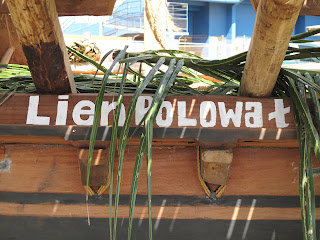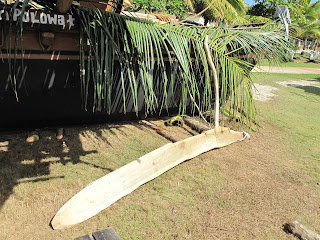November 2013 return trip to dive the World War II wrecks of Chuuk (Truk) Lagoon. The Japanese fleet was anchored in the lagoon and were attacked by bomber planes from an American Aircraft Carrier Task Force on February 17 and 18, 1944 during Operation Hailstone. Over 61 ships were sunk during the air attacks. Most of the sunken ships are armed freighters and naval support ships as the cruisers and destroyer war ships escaped the day before the operation.
The re-breather divers photographing the bridge of the Nippo Maru.
Japanese field artillery gun on deck of the Nippo Maru.
Assembly line of spare submarine periscopes inside the submarine tender Heian Maru.
Soft corals on the deck of the Shinkoko Maru.
Bidet in the operating and medical bay of the Shinkoko Maru.
Soft corals and Blue Damselfish on the Shinkoko Maru.
Life boat davits on the Gosei Maru.
Cockpit section of a Mitsubishi Zero in the cargo hold of the Fujikawa Maru.
Dive guide Sam on the tail section a Zero in the Fujikawa Maru.
Sponges and soft corals on the Sakisan Maru.
Gas mask on the Shinkoko Maru. There are hundreds of these in all the wrecks indicating how paranoid the crews were of gas attacks.
Gordon Khols at the stern telegraph on the Fujikawa Maru.
Pottery water bottle on Heian Maru.
Bow Deck Gun on the Fujikawa Maru.
Inside the operating room on the Kensho Maru.
Ceramic bed pan on the Kensho maru.
Mitsubishi Zero in cargo hold of Fujikawa Maru.
Name plate of 6 inch breech loading bow gun on the Fujikawa Maru. The gun was manufactured in England by Eswich Ordinance Company and sold to the Japanese Navy in the 1930's.
Large naval shells inside Amaguri Maru probably for the Japanese Navy heavy cruisers and battleships.
View inside the kitchen galley on the Kensho Maru.
Cooking stove ? Located on the Kensho Maru.
Japanese infantry rifles in the cargo holds of the Rio de Janeiro Maru.
Close up of stern telegraph on the Fujikawa Maru.
Matt Young one of the re-breather tech guys diving the wrecks.
Sponges and vibrant soft corals on the fordeck crane on the Yamagiri Maru.
Inside the cargo hold "Wine Cellar" on the Rio de Janeiro Maru.
Bow deck gun of the Fujikawa Maru.
One of the huge propellers on the Gosei Maru.
Mitsubishi Zero engine cowling in the cargo hold on the Shinkoko Maru.
Gordon Kohls entering bow hatch on the Shinkoko Maru.
Kim Sweet on a safety stop on the Kensho Maru.
Human remains of a crew member on the Kensho Maru.
Ascending off the hull of the Gosei Maru.
Japanese tank on the deck of the Nippo Maru.
Truck inside the cargo hold number 2 on the Shinkoko Maru.
Main kitchen galley inside the Kensho Maru.







































.jpg)
.jpg)
.jpg)
.jpg)
.jpg)
.jpg)
.jpg)
.jpg)
.jpg)
.jpg)









